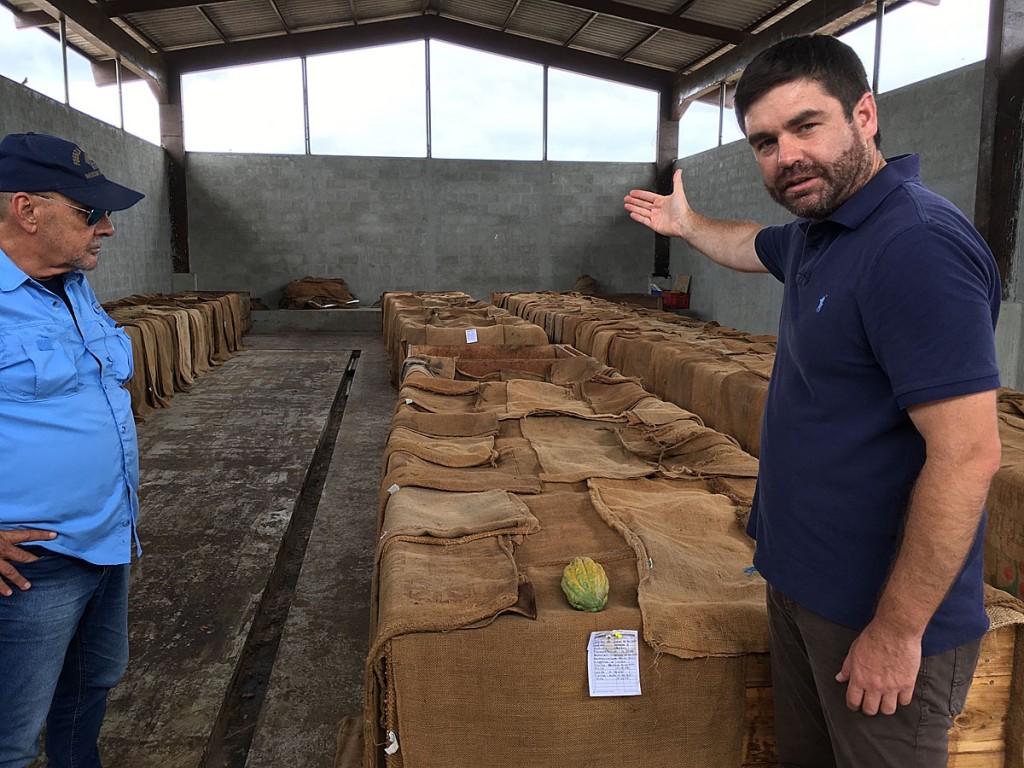Page 1: Ecuadorian Cacao
Page 2: Cacao Shipping
Page 3: What’s Next for Ecuadorian Cacao?
Page 4: Global Cacao Trade
Cacao Shipping
Methods of packing and shipping to insure minimal spoilage have improved. Hacienda Victoria, for one, performs sophisticated lab testing to guarantee no chemical or heavy metal residues that clients don’t want, notably cadmium, which is now prohibited by the European Union.
Ecuadorian ports are now vying for cacao business. The port of Guayaquil, which has served as Ecuador’s primary port, now has competition, including Manta, on the country’s central coast. Most notably, DP World built a $540 million greenfield container port at Posorja, southwest of Guayaquil. With an initial capacity of 750,000 TEUs, it began operations in August. Featuring a 54-foot navigation channel, Posarja can accommodate post-panamax ships and should make shipping rates more competitive.

At the same time, markets for fine cacao are expanding and diversifying from the traditional destinations of Europe and Japan. Guzman cited the US market as one that is poised to grow substantially. He believes China, the Mideast and Russia are markets of the future for premium cacao
In addition to better quality beans, Ecuador offers itself as a more humane and equitable farming environment compared to Africa, which carries the continued stigma of abject poverty, child labor and even slavery.
“The industry is turning to Ecuador” from Africa, said van Santvoort. At the same time, “Ecuador is really promoting itself as a cocoa growing country. They’re saying ‘we were the first to grow this. We have the best beans.’”
Adds Francisco Miranda, the sustainability manager at the Guayaquil-based cacao company Agricola Guangala and the head of Anecacao, the association of cacao exporters in Ecuador: “The [international] market has embraced all cacao coming out of the country for flavor profile, for quality of excellence and for improved standards of sustainability.”
Meanwhile, a growing number of Ecuadorian entrepreneurs are focusing on finished products, notably upscale chocolate. (See sidebar on this page) They “have started experimenting with different fermentation techniques and different cocoa varieties,” said Miranda. “They’re expanding into different areas and getting stronger as companies year by year, which is great for everybody, not just for the export market.”

Follow us on social media: